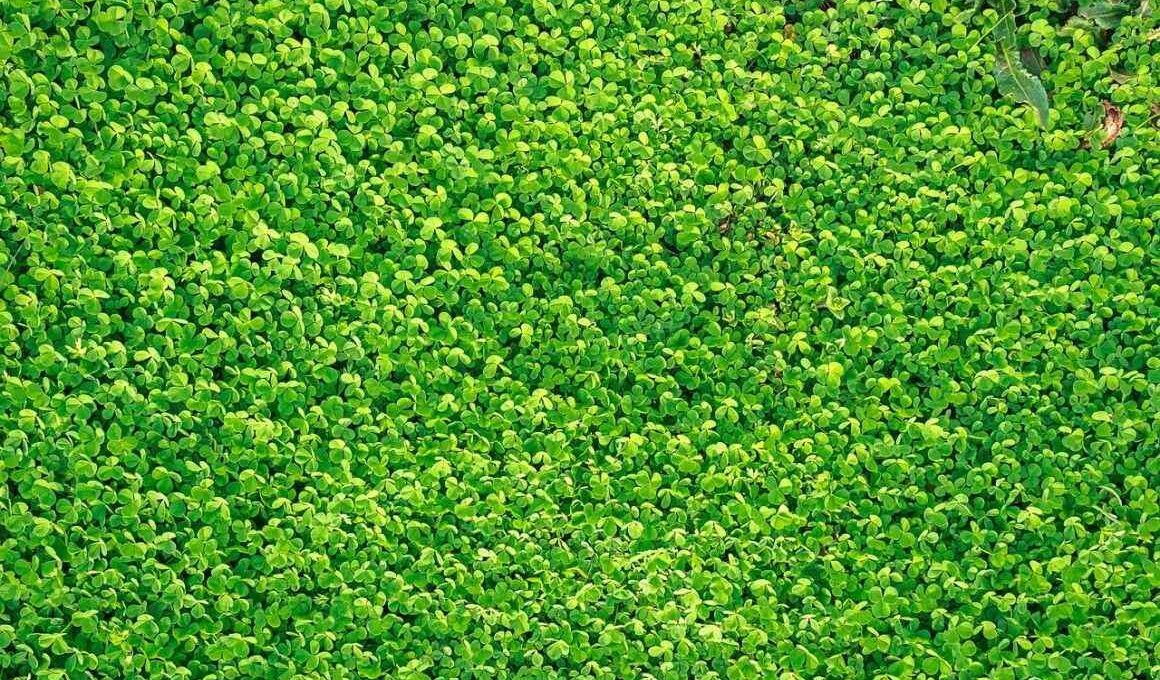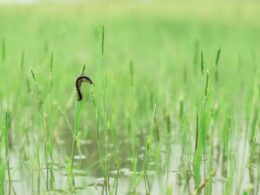What Is Clover Grass?
Clover grass, also known simply as clover, is a type of plant that is known for its distinctive leaves and rapid growth. Clover is a hardy perennial that grows rapidly from seed and can thrive in many environments. It usually features bright green leaves with three lobes, although there are different varieties with different leaf shapes. Clover grass makes an ideal ground cover or lawn substitute, as it requires minimal maintenance and thrives on even the most depleted soil.
Clover Grass Appearance
Clover grass is a perennial that forms a carpet of fine, soft green leaves with a dense and creeping growth habit. It’s ideal for areas of the lawn where grass won’t grow, such as slopes or areas with poor drainage. In addition to its foliage, clover produces an abundance of small white flowers, and therefore the clover is referred to as white clover (Trifolium repens). Usually, clover grass is grown as a ground cover in areas that are covered in shade or are too low-maintenance to be used as turf.
Clover Flowers
The flowers can be white or pink, and they typically bloom in the spring or summer. Clover is a popular food source for bees, which in turn allow the flowers to pollinate other plants.
Clover Grass Habitat and Distribution
Clover grass is native to Europe and Asia, but it has been introduced to North America and other parts of the world. Clover grass grows in a wide range of habitats, including open woodlands, meadows, and roadsides. It is often found in disturbed areas, such as vacant lots and construction sites. Clover grass is a low-growing plant that forms dense mats.
Clover Grass Reproduction
Clover grass reproduction is accomplished by sending out stolons, which are horizontal stems that grow above the ground surface and have nodes that develop roots at regular intervals. These stems will eventually produce new clover plants at each node.
Benefits of Clover Grass
Clover is a flowering plant, but it’s not just any plant, it’s one that can be added to your lawn. Some people are skeptical and think it will be hard to keep, but in reality, clover grass has several advantages over traditional grass. Clover is drought-resistant, requires less fertilizer than many grasses, and once established, it does not require a lot of attention. It has the ability to grow in areas where there is only little sunlight present.
How to Care for Clover Grass
Anyone who has ever tried to grow grass knows that it is not an easy task. Grass is fickle, and often seems to have a mind of its own. However, there is one type of grass that is relatively easy to care for: clover grass. Clover grass is often used as a cover crop or as a source of forage for livestock. Clover grass is also becoming increasingly popular as a lawn grass, due to its low maintenance requirements. Here are some tips for caring for clover grass.
Mowing Requirements
Clover grass does not need to be mowed as frequently as other types of grass. In fact, mowing too often can actually damage the turf. Instead, allow the clover grass to grow to a height of 3-4 inches before cutting it back.
No Fertilizing Requirements
Clover grass does not need to be fertilized as frequently as other types of grass and traditional lawns. A slow-release fertilizer applied once per year is typically sufficient. It is worth noting that clover is a perennial plant and may need to be reseeded every two years.
Watering
Clovergrass is relatively tolerant of drought conditions and does not require frequent watering. However, during extended periods of dry weather, it is important to provide supplemental watering.
Is White Clover Considered a Weed?
White clover is a perennial plant that can be found thriving all over the world. While this common grass is often considered a weed, it is actually quite beneficial for lawns, and can even contribute to healthy soil composition by fixing nitrogen in the ground. Clover is popular with both gardeners and farmers because of its ability to grow in harsh conditions and support a wide range of plants and crops. Furthermore, clover attracts beneficial insects and pollinators like bees, which help to keep populations of harmful bugs in check.
Herbicide for Clover Grass
Clover grows easily and it some areas clover may grow in unwanted areas. If that is the case, there are different types of clover herbicides and weed killers, that may kill clover in a lawn and help the lawn stay green and well-maintained.
How to Establish Clover Lawn?
A clover lawn is a type of turfgrass that is made up of different species of clover. Clover is a nitrogen-fixing legume, which means that it helps to increase the nitrogen levels in the soil. This, in turn, helps to create a healthier environment for other plants to grow. In addition, clover is a highly resilient plant that can tolerate both hot and cold weather. As a result, it is an ideal choice for those who want to establish a low-maintenance lawn.
Preparing Soil
To establish a clover lawn, start by preparing the soil. The soil should be well-drained and have a pH level between 6.0 and 7.0. Once the soil is prepared, sow the seed at a rate of 1 gram per square meter. Once the clover seeds have germinated, mow the clover lawn once every four weeks.
How to Plant Clovers in Existing Lawns?
Clover is also a hardy plant that is tolerant of heat and drought, making it an ideal choice for lawns in dry climates. In addition, clover has a shallow root system that helps to reduce compaction and improve drainage. To plant clover, simply broadcast the seeds over your lawn and rake them into the soil. Then water the area deeply and keep the soil moist until the seeds germinate. Clover can be an effective way to improve the health of your lawn.



















